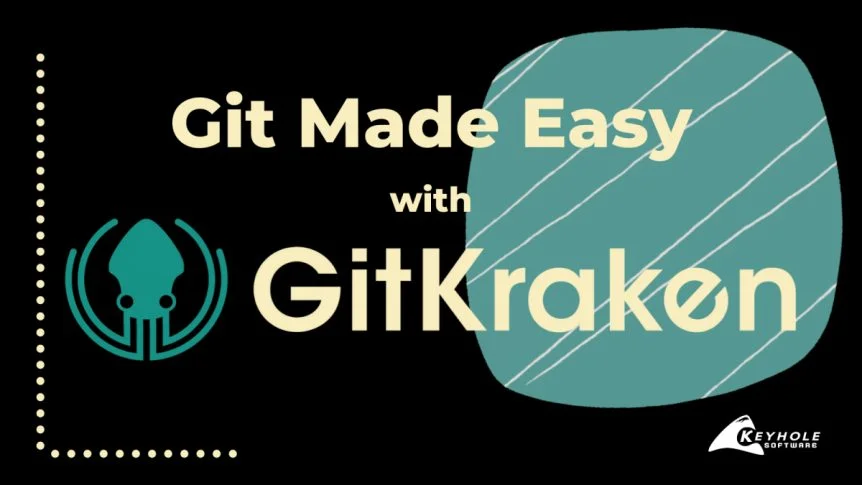Whether you are a newborn or a wizened deep-ocean octopod, each user will need to open, clone, or initialize a repo in GitKraken.
Setup
The essential setup process includes:
- Installing GitKraken
- Creating an account and setting up your profile
Once this is complete, you are ready for your oceanic journey!
Configuring GitKraken to push/fetch w/ Github. Ask Question Asked 4 years, 2 months ago. Active 1 year, 1 month ago. Viewed 24k times 19. I am trying to configure. GitKraken also allows initializing a repository directly to a remote Git hosting provider such as GitHub and Bitbucket.

Projects in GitKraken
There are three ways to start a Git repository when working on a project:
- Open - Open a local Git repository already initialized and available locally.
- Clone - Clone a remote Git repository already initialized.
- Init - Create an empty Git repository or reinitialize an existing one.
Opening an existing project
GitKraken allows you to load your existing repositories and pick up where you left off. It's also useful for visualizing past work done.
If you're coming from a Git project you already have locally, navigate to File Open Repo to get started immediately in GitKraken.
Cloning an existing project
If your project is not on your local machine or you want a new copy, clone the project through File Clone.
This will then prompt you to open the newly copied project in GitKraken.
Initialize a new project
Starting a project in GitKraken is easy through File Init
All you need to do is fill out the fields and select for the magic to begin.
Gitkraken Github Personal Access Token
Input
- New repository path
.gitignoretemplate (optional)Automatically creates a
.gitignorefile in your working copy.License (optional)
- On init, GitKraken will create a
LICENSEfile in your repository. - Check out the Open Source Initiative or find out more about Choosing a License.
Git Cracker
Output
- A new initialized Git project at the specified repository path by creating a
.gitfolder. - The project is opened in GitKraken
- An 'Initial commit' on a
masterbranch containing a blankREADME.mdalong with a.gitignoreandLICENSE.mdif applicable.
GitKraken also allows initializing a repository directly to a remote Git hosting provider such as GitHub and Bitbucket.
Delete a repository

You may delete a repository by first navigating to the folder icon in the upper left corner of the GitKraken UI.
Then browse through your repo list and right-click on the repository you wish to delete from your local machine.
If you are unable to delete the repository, first make sure it is closed in GitKraken and then close any other applications which may be working with files in the repository. Restart GitKraken and try the delete again.
Deleting the repo from within GitKraken will only delete your local copy of the repository. If you wish to delete your remote repository, you will need to perform that action directly by logging into your remote hosting service (GitHub, GitLab, etc).
Why do teams use GitHub and the GitKraken Git GUI?
Migrating to Git as your distributed version control system will improve the overall efficiency of your development teams, but initially, developers will face a steep learning curve. Failure to address this challenge often results in increased time to ship your code and decreased code stability. In this white paper, you’ll learn how to tackle this challenge head-on! We’ll share best practices for how tens-of-thousands of teams have successfully deployed Git, GitHub and the GitKraken Git GUI across their organizations.
This white paper covers the following topics:
- Benefits of Git
- Migrating to Git from other source control methods
- Challenges developers face adopting Git
- Training and educational resources for learning Git
- Best practices for large scale deployments of Git, GitHub and the GitKraken Git GUI
- How to deploy the GitKraken Git GUI with GitHub to enhance your workflow
- Maintaining security standards with Stand-Alone & Self-Hosted
- Best practices for deploying GitKraken Stand-Alone & Self-Hosted
How to use GitHub with the GitKraken Git GUI
If your team is using GitHub.com or GitHub Enterprise to host your repositories, the GitKraken Git GUI can help streamline your workflow and make working with Git much more intuitive! Distribute this tutorial video to your team, and you’ll have everyone up and running with Git, GitHub and the GitKraken Git GUI in less than 1 hour.
This video covers the following topics; use the links to quickly jump ahead:
- What is a Git repository? (1:33)
- Working with remote repositories and GitHub (2:29)
- Authenticating GitKraken with GitHub (3:48)
- Generating an SSH key with GitKraken (7:59)
- Cloning a repo from GitHub (10:45)
- Opening an existing repo (12:35)
- Making a change, staging and committing (14:29)
- Pushing a change to a GitHub remote (22:42)
- Undoing (26:15)
- Pulling a change from a GitHub remote (30:20)
- Creating a feature branch and pull request (32:24)
- Adding a remote manually (45:17)
- Using GitKraken Boards with GitHub Issue Sync (47:23)
Download Git For Windows 10
How to use GitHub with GitKraken Boards
Github Gitkraken Crack
GitKraken Boards syncs in real-time with GitHub Issues and GitHub Milestones so changes made in either system are immediately reflected in the other. Link cards to GitHub pull requests, check PR statuses, auto-update cards based on PR statuses and view build statuses without leaving GitKraken Boards.
Plus, use GitHub Actions to automate your workflow; trigger automated actions in GitKraken Boards by linking cards to pull request descriptions or commit messages in GitHub. See how to quickly set up GitHub Issue syncing with GitKraken Boards.
